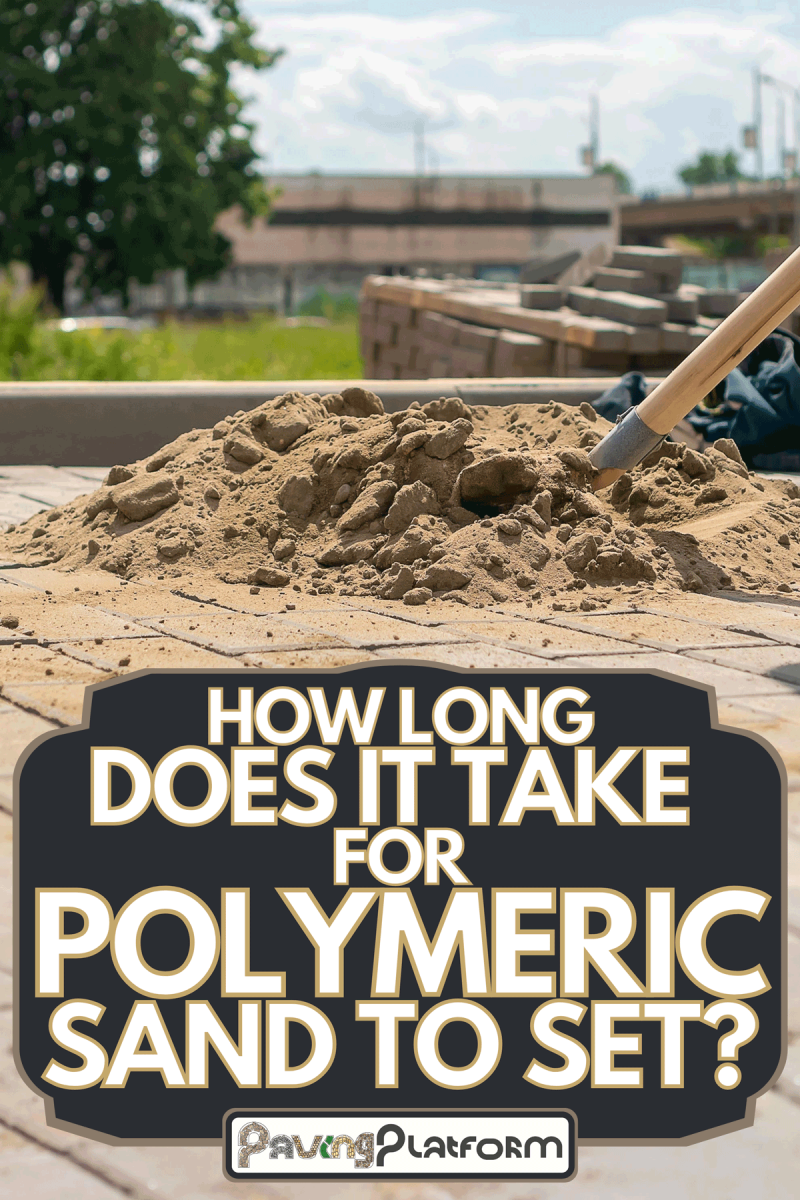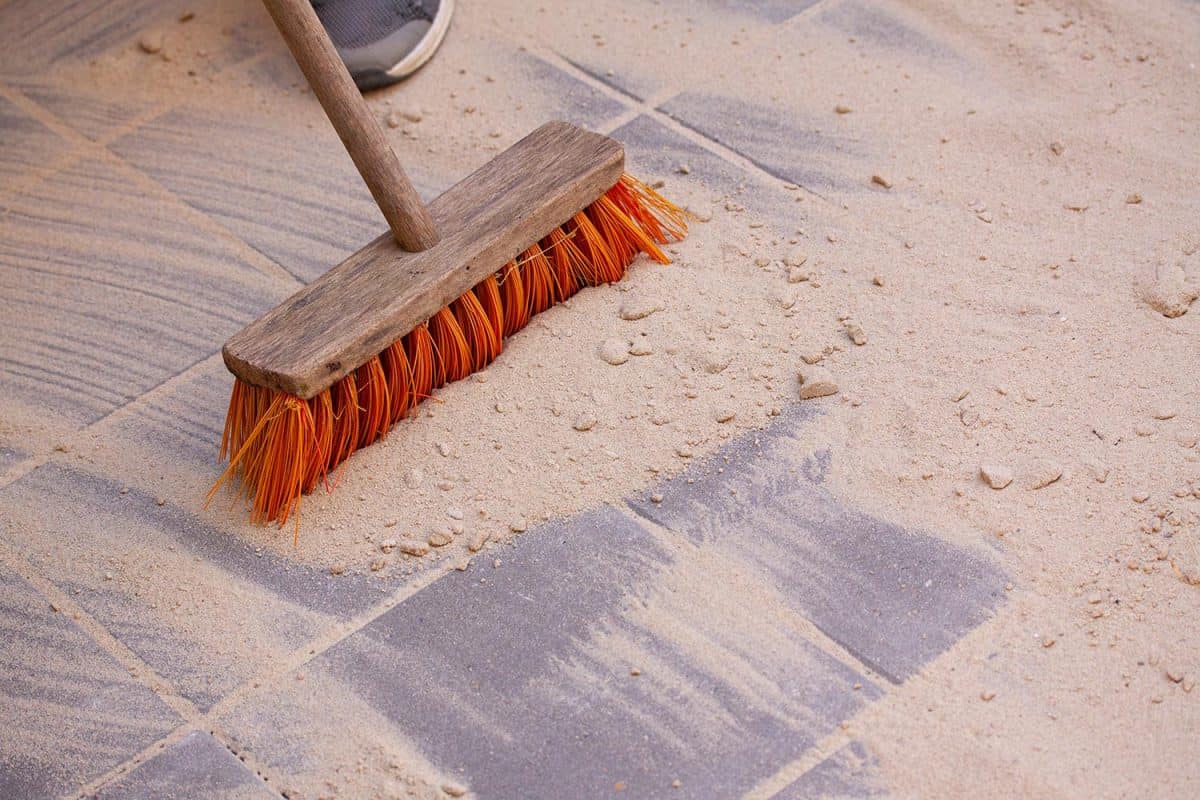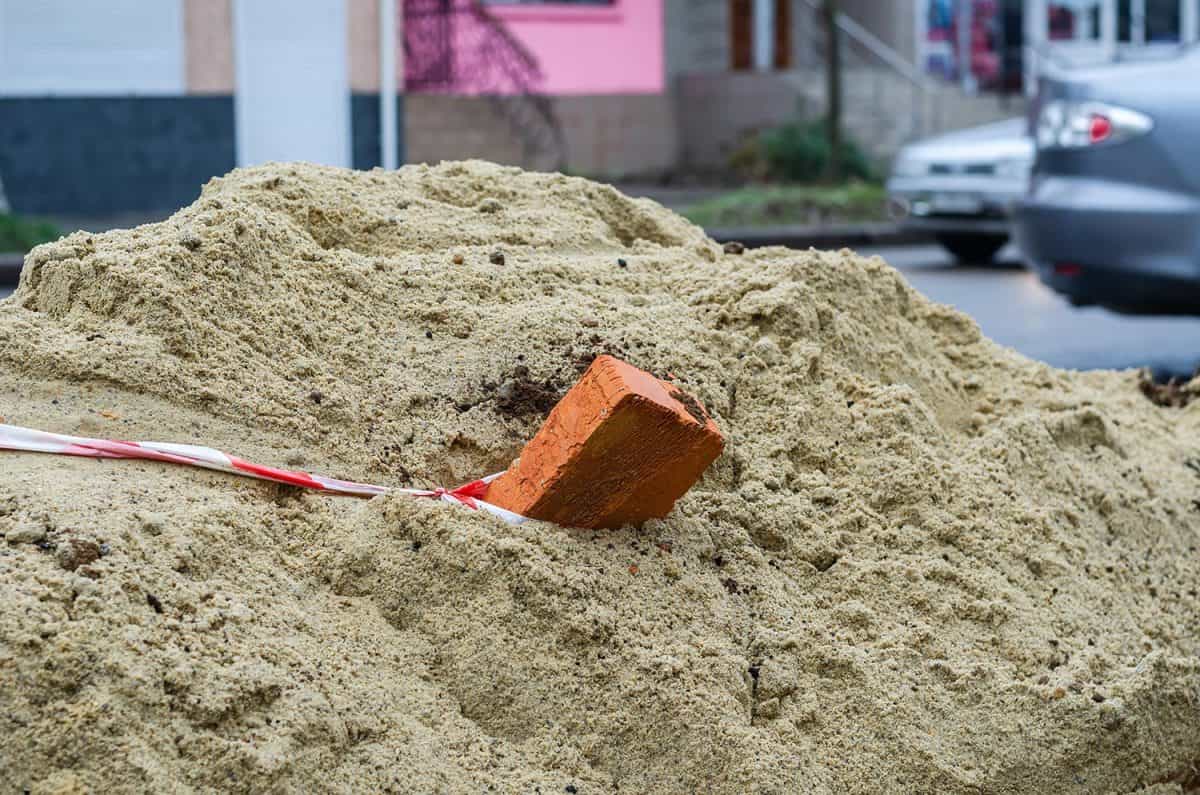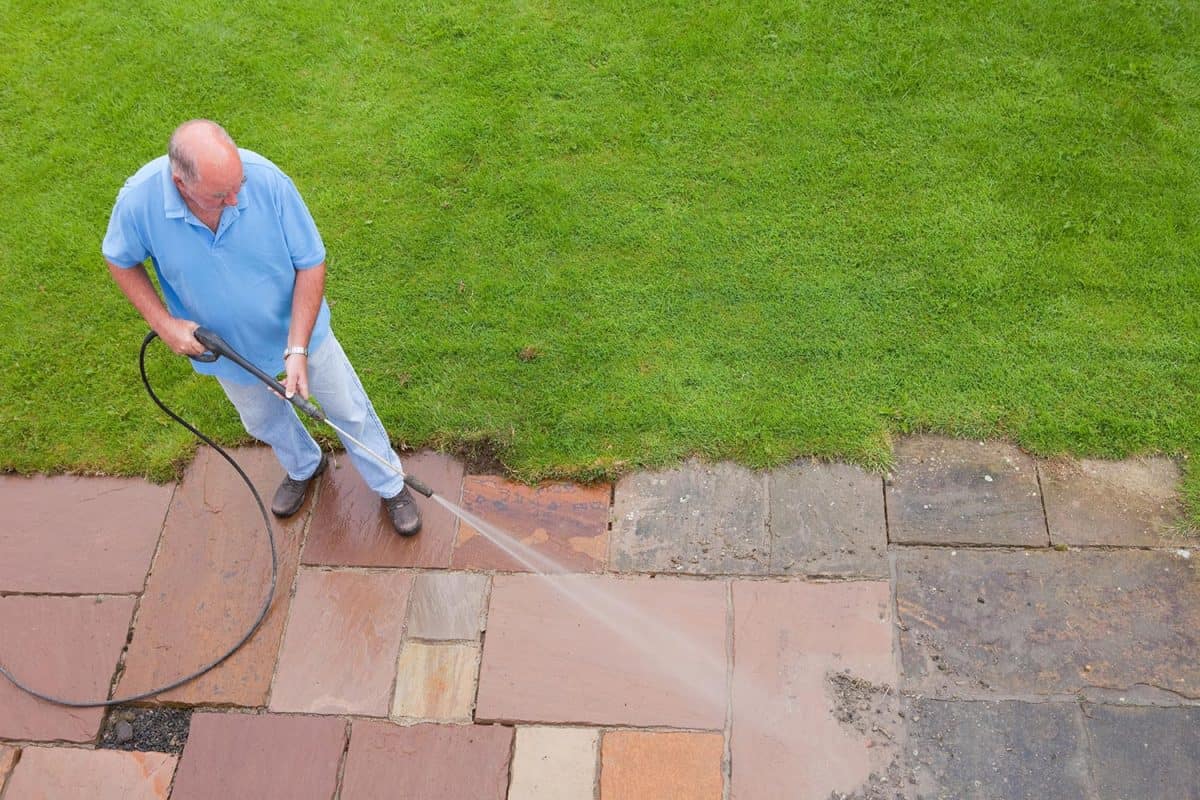Disclosure: We may get commissions for purchases made through links in this post.
Polymeric sand helps fill in paver joints and empty spaces in tile, stone, and brick pavers. It also aids in making patio and driveway pavers sturdy and in maintaining their integrity. If you're wondering how long does polymeric sand takes to set, then don't sweat it because we have all the answers in store for you!
It takes about a minimum of 24 hours for polymeric sand to completely set. It also requires at least 48 hours before vehicular activities are allowed on pavers with polymeric sand. For the best result, it is much better to wait at least 1-3 days for polymeric sand to set before allowing foot traffic or any movements on its surface.
There are a lot of advantages that come with polymeric sand. Keep reading if you want to learn all about this and more details on how long the sand takes to set.

All You Need To Know About Polymeric Sand
Polymeric sand is a fine sand combined with additives such as silica and polymer that forms a binding agent once it is exposed to water. Silica is the additive that helps lock the fine sands particles altogether, resulting in a flexible material that works wonders for the integrity of your pavers.
Once the sand particles fuse on the surface, pavers become sturdy and impenetrable to any possible damages such as chips, cracks, and weed growth, so this is no wonder why polymeric sand is one of the most trusted products by landscape professionals and contractors to help lock pavers and create impeccable results.
For your convenience, you can watch and learn from this discussion by Perfect Paver Co on YouTube.
How Do You Set Polymeric Sand?
Since polymeric sand helps in keeping the pavers locked together, letting it set is considered the final and most important step to take to ensure your pavers will look fine.
To set polymeric sand, here are some of the guidelines you might want to follow:
- Remember that polymeric sand should always be installed on a dry surface. With this, you need to look out for possible water moisture around the area.
- Know the weather condition the day you plan to install your polymeric sand because this factor determines the successful application of polymeric sand to your pavers. Do not install polymeric sand when it rains because this activates polymers that can ruin your unfinished hardscape.
- If possible, check the thermometer and make sure that it has a temperature of 32 degrees Fharenheit or anything above that range. This is recommended as the right condition to install polymeric sand.
- Ready your tools for the polymeric sand installation, which includes a utility knife, brooms, plate compactor, hose, and blower.
- Prepare the area and check whether or not there's enough space for you to set the sand in.
- Pour the polymeric sand and ensure to evenly allocate every part of the pavers. Doing this preserves a consistent gradation of the polymeric sand.
- Sweep the polymeric sand into the joints with a hard bristle broom.
- Thoroughly compact the sand down into the joints and cracks using a plate compactor.
- Repeat Step 8 for a couple of time until you are sure that your pavers are entirely surrounded with sand.
- Sweep away the sand remains on your installation with a hard bristle broom and leave at least 1/8 inch reveal between the top surface of your pavers and the polymeric sand.
- Using a blower, blow away the remaining residue of sand around the area.
- Water the surfaced area of your pavers to activate the polymers. Do not water with a large amount all at once.
- Initially start by watering at the height of 4 feet and do this not longer than 3-4 minutes. After the first watering, rinse again but this time at the height of 4 feet and wait no longer than 3-4 minutes. Finally, water instantly until a white foam or puddle is evident on the pavers. Immediately stop when you see this occur.
- Grab your blower once again and blow away any excess residue.
- Wait for at least 24 hours before for the polymeric sand completely set on your pavers even if you have purchased a product that dries quickly. Also wait for 3 days before allowing vehicular traffic on driveway pavers.

If you're on the hunt to find a great product of polymeric sand, go for those with an ASTM C144 gradation that guarantees usage in even the tightest joints. It can also save you time during installation as it has a no-dust, no blower, and haze-free feature!
See this AllianceGator's Maxx G2 Intelligent polymeric sand on Amazon.
Polymeric Sand: Pros And Cons
Here are some of the advantages and drawbacks you might want to consider when installing polymeric sand.
Pros
- It helps condition your hardscape pavers annd guarantee versatility and durability.
- Polymeric sand lengtens the lifespan of your pavers.
- Polymeric sand is not easily washed out, even with strong rainfall.
- Polymeric sand is intercepts weed growth.
- Polymeric sand is also an insect deterrent and specifically prevents ants to enter the pavers crack.
- It comes in different colors like tan, ivory, gray, and black.
Cons
- Polymeric sand can harden quickly which means that it limits a room for mistakes.
- Polymeric sand is hard to remove in case you plan to replace some pavers.
- Improper installation of this product can ruin your pavers and any hardscape projects.
- Polymeric sand can be expensive.
- Polymeric sand lessens permeability.
Polymeric Sand Vs. Regular Sand: What's The Difference?
Both polymeric and regular sand are good for filling in paver joints. However, polymeric may outshine regular sand in a number of ways since it makes pavers last long, and it's much better at managing drainage compared to regular sand.
On several occasions, some homeowners opt for regular sand because it is budget-friendly and is the most available option for pavers.
However, since unpredictable weather conditions and regular cleaning and maintenance are part of the routine that pavers endure, regular sand has a bigger tendency to be washed out compared to polymeric. Because of this, it allows the joints to be susceptible and be filled with unwanted objects like dirt and weeds.
Regular sand is made up of coarse particles that efficiently work as a sealer for interlocking pavers and joints and this is best applied when creating a leveled base for a paver installation.

One of the advantages that come with regular sand is that it can be distributed fairly for the use of paver foundation for both patios and driveway.
Aside from that, it is ideal for projects that may need regular adjustments since it doesn't harden very quickly compared to polymeric sand and requires absolutely little maintenance.
Whether you would choose regular over polymeric sand, the choice however entirely depends on your personal preference and what hardscaping projects you have in mind.
But if you really desire strong and steady pavers, then polymeric is the best option to go for.
Can You Reapply Polymeric Sand?
![Sweeping in a joint sand on a construction site, Is Polymeric Sand Permeable? [What You Should Know Before Filling Paver Joints]](https://pavingplatform.com/wp-content/uploads/2022/03/Sweeping-in-joint-sand-on-a-construction-site.jpg)
Yes. You can absolutely reapply polymeric sand. In fact, this is an important task you need to do to maintain your pavers.
However, it is important to remind yourself that you only need to reapply polymeric sand for about two to three years in specific areas on your pavers as some homeowners suggest.
Nevertheless, reapplying polymeric sand can entirely depend on how quickly the old sand is lost. This factor can be caused by the weather conditions in your region.
For additional insight, take a look at this YouTube video by Bill Winterberg:
Can You Pressure Wash Pavers With Polymeric Sand?

You can pressure wash polymeric sand using cold or warm water after it has completely set. You can also do this everytime you are doing your regular cleaning and mainteance for your pavers.
One important reminder to take note of is that you should not immediately pressure wash polymeric sand after you installed it. Doing so ruins the polymers, and allow sandy particles to cause haze on the pavers surface.
If you wish to remove polymeric sand, you can simply pressure wash this with hot water to reactivate the polymers into raw sand particles. This strips the polymeric sand off easily so that you can reapply a fresh new set of polymeric sand.
In Closing
It takes 24 hours for polymeric sand to set and stabilize your pavers. You may want to wait for a maximum of 3 days to ensure that foot and vehicle movements can be allowed on the pavers surface without causing damages.
Now that we have answered your questions about polymeric sand, you might as well check out these other posts:


![Vibrant Red Paver Stone Path, Can You Spray Paver Sealer? [How To Apply It]](https://pavingplatform.com/wp-content/uploads/2022/04/Vibrant-Red-Paver-Stone-Path-600x400.jpg)
![Properly laid out red pavers for a garden, Can You Tint Paver Sealer? [And How To]](https://pavingplatform.com/wp-content/uploads/2022/04/Properly-laid-out-red-pavers-for-a-garden-600x400.jpg)
